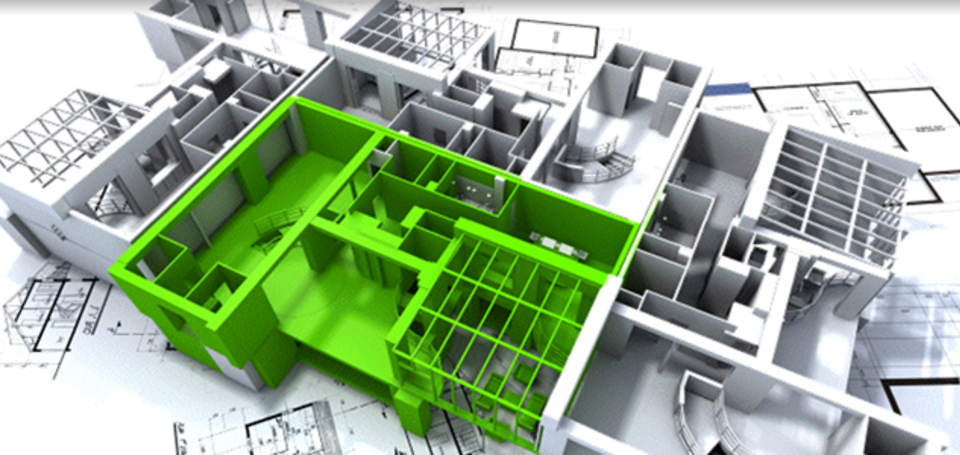-
 focusing on the green investment prospect
focusing on the green investment prospect -
 to reveal the hidden value
to reveal the hidden value -
 in real estate and urban infrastructure
in real estate and urban infrastructure -
 through efficient and sustainable use of resources
through efficient and sustainable use of resources -
asd
Written by Ioannis Orfanos, Director, Green Value Associates.
There is more pressure than ever for companies to reduce their greenhouse gas emissions and control energy costs, and there are more potential paths than ever that companies can take to improving their sustainability performance.
So, which sustainability initiatives are perceived to yield the optimum combination of environmental and economic benefit?
Many corporate sustainability executives believe comprehensive energy-efficiency retrofits of existing buildings represent the most effective way to reduce emissions and reduce operating costs. Despite this apparent consensus, a significant gap exists between the perceived economic and environmental effectiveness of comprehensive energy efficiency retrofits and their implementation.
And why are there significant gaps between the choices that often get made versus the paths with the greatest combined benefits?
To explain the apparent disconnect, it’s helpful to ask a number of additional questions, and important to keep in mind that not all building energy efficiency initiatives are equal.
1. How much potential do buildings hold for reducing emissions and costs?
A recent study by the Energy Information Administration (EIA) found that 75% of building space in Europe belongs to buildings that are more than 20 years old. Furthermore, at least half of the buildings that will be in use in 2050 already have been built. Most were built when there was little awareness or concern about rising energy costs or climate change. 60% of office buildings were builtbefore 1980 and many need upgrades. As a result, these existing buildings represent significant potential for cost and greenhouse gas emissions reductions.
2. What kind of savings and ROI can you expect from retrofits?
A Rockefeller Foundation study conducted last year estimated that an investment of $279 billion in US building retrofits could reduce the energy use of older buildings by 30%, and realise more than $1 trillion in energy cost savings over 10 years and create more than 3.3 million jobs. In addition, an analysis by the American Council for an Energy Efficient Economy shows that the average return on investment for energy efficiency projects exceeds 20%. This is similar to findings by the Department of Energy’s Better Building Alliance, which maintains that a typical commercial building can save 20% on its energy bills just by commissioning existing systems so they operate as intended.
3. How do 'deep' energy retrofits differ from conventional ones?
Until recently, most building energy retrofits typically have been prompted by government tax incentives or utility rebate programs, and aimed at specific (and often single) building components such as energy efficient lighting or green roofs. Conventional energy efficiency retrofits typically focus on an individual building system such as lighting or HVAC in isolation. On the other hand, "deep retrofits" represent a "systems thinking" approach that promises greater efficiency and financial paybacks by considering how multiple building components such as lighting, mechanical systems, building envelope, occupancy patterns and seasonal weather patterns interact and contribute to a building’s energy use and environmental performance. While conventional retrofits can be expected to achieve operating cost savings of 20%, an integrative deep retrofit can reduce energy consumption and the associated operating costs by as much as 75%.
4. What are the primary obstacles to deep retrofits?
Typical building assessments make assumptions that vary significantly from actual conditions and fail to consider the dynamic interplay of occupants, climate, weather and building systems. In large part it is due to a lack of accurate baseline building performance data as well as limited data about operating data and occupant behavior. In addition to the limited availability of data, the boardroom and the boiler room speak different languages. Financial analysts talk about Net Present Value (NPV), Internal Rate of Return (IRR), Return on Investment (ROI) and EBITDA; while building managers talk about Coefficient of Performance (COP), Load Profiles and Thousands of BTU per SqM. Complicating matters further, architects and designers seldom are engaged to determine if things are working as planned. Building operations personnel are seldom sought out. Therefore, efforts tend to be tactical rather than strategic, single-dimensional rather than multidimensional. This is of particular importance because buildings are complex interactive systems. It should come as no surprise then that achieving building performance improvements to this point has been limited.
5. What limits the reliability of business case analysis for deep retrofits?
It can be difficult to make the business case for deep energy retrofits when building owners and building tenants do not share the costs and benefits of a retrofit equally. Such split incentives can inhibit improvements to environmental performance. For example, "triple net" leases, common in the retail and industrial sectors, do not motivate building owners to pay for energy efficiency retrofits. That's because the savings accrue to the tenant, and tenants are not motivated to implement deep energy retrofits if the payback period is longer than the lease term, or requires capital improvements to building structures beyond their leasehold boundaries. Another factor is basing retrofit targets on unreliable data.To help building owners and managers achieve the optimal results, it is necessary to employ outside assistance to bring this holistic understanding. An interdisciplinary team of engineering, architectural, building science and financial professionals to provide the integrated expertise required to assess, model, plan and implement deep retrofits.





